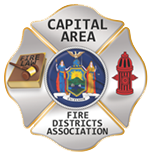By Frank Ricci
Volunteer firefighters are critical to many of America’s communities, donating time and labor worth billions of dollars each year, but the country’s biggest firefighters union apparently is trying to extinguish them. The International Association of Fire Fighters (IAFF) represents more than 325,000 professional firefighters and paramedics across the United States and Canada. If their goal is to replace volunteers with dues-paying members, it would place a significant burden on taxpayers in many communities.
Shortages of willing volunteers have reached a crisis level affecting areas in several states, including Virginia and California. There likely isn’t a volunteer fire department that is immune from recruitment and retention issues. These issues can affect departments’ abilities to respond when people call 911, and they can have a direct impact on local property taxes.
The Virginia Fire Chiefs Association says the shortage of volunteers has hit a critical level. Seventy percent of Virginia’s firefighters are volunteers, according to the Richmond Times-Dispatch.
The ongoing challenges with recruitment and retention are compounded by the constitution and bylaws of the IAFF, prohibiting career firefighters from volunteering. These bylaws were codified in March and include “volunteering” in a list of serious charges such as embezzlement, assault of an officer, or membership in a terrorist organization. The penalty for a career firefighter donating his time to help a child who is having an asthma attack, or to respond to a car accident or participate in saving a neighbor’s home or business could be a “reprimand, fine, suspension from office, or suspension or expulsion from membership.”
In states and jurisdictions with collective bargaining laws, the IAFF’s ban against volunteering is expanding past its bylaws with recommendations that are highlighted in the union’s “Model Contract Language Manual,” to prohibit a career firefighter from volunteering regardless of union membership. If this language is codified into contracts, it could have a devastating impact when a person calls for help. What if a call goes unanswered?
Many communities rely on career firefighters who choose to give back to their hometowns by augmenting training programs, fulfilling command roles or operating complicated fire apparatus. Obtaining certification and clearance to drive a firetruck is a difficult requirement for a volunteer to obtain. It is not uncommon to have a qualified crew ready to respond to a call, but left waiting for a driver. Or, in volunteer departments with duty nights — in which volunteers commit to staff a shift — some are unable to staff all the apparatus in the station because of a lack of drivers.
Most career firefighters started as volunteers, bringing vital experience to their departments. Volunteer departments typically have robust training budgets and provide quality training opportunities.
A 2020 report from the National Volunteer Fire Council states that volunteers comprise 67 percent of firefighters across the country. Of the 29,706 fire departments in the United States, 19,112 are all-volunteer; those agencies protect communities of 10,000 or fewer residents. The report found that the number of volunteer firefighters hit an all-time low in 2017 — underscoring the need for volunteers.
According to the National Fire Protection Association, time donated by firefighters who are willing to volunteer can save localities an estimated $46.9 billion combined. Career firefighters have been volunteering since the establishment of the career fire service. Isn’t this a tradition that is worth embracing?
Volunteer firefighters represent the best in America — neighbors helping neighbors. Individuals are willing to answer calls, even knowing that they could make their spouse a widow and their children parentless by helping the community they serve. It’s a shame to see a labor union try to place limitations upon the volunteers.
